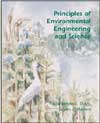| Accumulation | The change in mass or moles within a system with respect to time. This change can be either positive or negative and accordingly accumulation is positive or negative.
|
 |
 |
 |
| Advection | A process by which solutes are transported in a fluid. Advective transport is the bulk movement of solute as a direct result of cocurrent movement of the fluid elements.
|
 |
 |
 |
| Batch System | A system in which there is no transfer of material across its boundary during the time interval of interest.
|
 |
 |
 |
| Closed System | A system in which there is no transfer of material across its boundary during the time interval of interest.
(Same as a Batch System.)
|
 |
 |
 |
| Conservative Chemical | A chemical that undergoes chemical, biological or radioactive decay in the environment.
|
 |
 |
 |
| Consumption | The rate of disappearance of a substance in a reaction.
|
 |
 |
 |
| Control Volume | Control Volume is the region of space over which our attention is focused.
|
 |
 |
 |
| Diffusion | A transport process at the microscopic level.
|
 |
 |
 |
| Dispersion | The spreading of the solute from the path that it is expected to follow according to advective hydraulics.
|
 |
 |
 |
| Equilibrium | A state in which there is no tendency toward spontaneous change.
|
 |
 |
 |
| First Order Reaction | Reaction that happens when the rate at which the concentration of a reactant decreases or the concentration of the product increases is found to be proportional to the concentration of the remaining reactant.
|
 |
 |
 |
| Flow System | A system in which material is transferred across the system boundary, that is, enters the system, leaves the system or both.
(Same as Open system)
|
 |
 |
 |
| Generation | The appearance of a substance due to a reaction.
|
 |
 |
 |
| Non-Conservative Chemical | A chemical which reacts chemically, biologically or undergoes radioactive decay.
|
 |
 |
 |
| Non-Point Source | The source of pollution which is discharged into the natural water body at multiple points.
|
 |
 |
 |
| Open System | A system in which material is transferred across the system boundary, that is, enters the system, leaves the system or both.
|
 |
 |
 |
| Order of Reaction | The order of a reaction identifies the type of equation that expresses the rate at which a reaction occurs.
|
 |
 |
 |
| Point Source of Pollution | Source of Pollution which is discharged into the natural water body at a single point is called Point Source of pollution.
|
 |
 |
 |
| Residence Time | Used as a measure of the processing rate for flow reactors; the time required to process one reactor volume of feed, i.e. input.
|
 |
 |
 |
| Second Order Reaction | Reaction that happens when the rate at which the concentration of the reactant decreases is proportional to either the sqaure of the concentration remaining,(indicating that two molecules of the reactant react to form the products) or to the product of the concentration of two reactants.
|
 |
 |
 |
| Steady-State | When values of the variables within the system [such as volume, concentration] do not change with respect to time.
|
 |
 |
 |
| System | Control Volume is the region of space over which our attention is focused.
(Same as Control Volume)
|
 |
 |
 |
| Unsteady-State | Occurs when the variables within the system such as the concentration and the control volume change with time.
|
 |
 |
 |
| Zeroth Order Reaction | A reaction that happens when the rate of reaction is independent of the concentration of materials.
|




 2004 McGraw-Hill Higher Education
2004 McGraw-Hill Higher Education